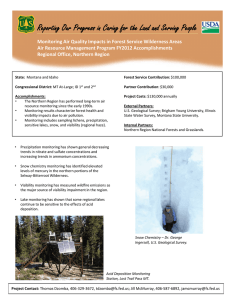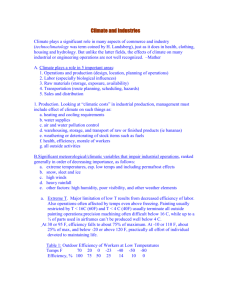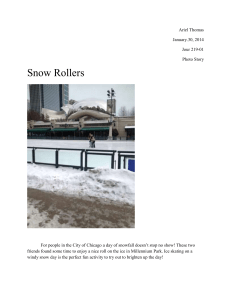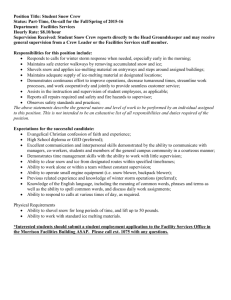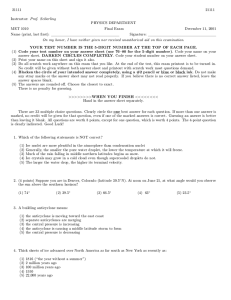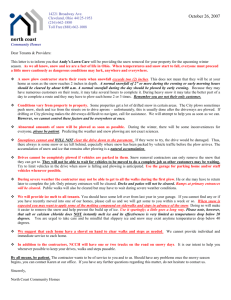DRIVING IN EXTREME WEATHER CONDITIONS
advertisement
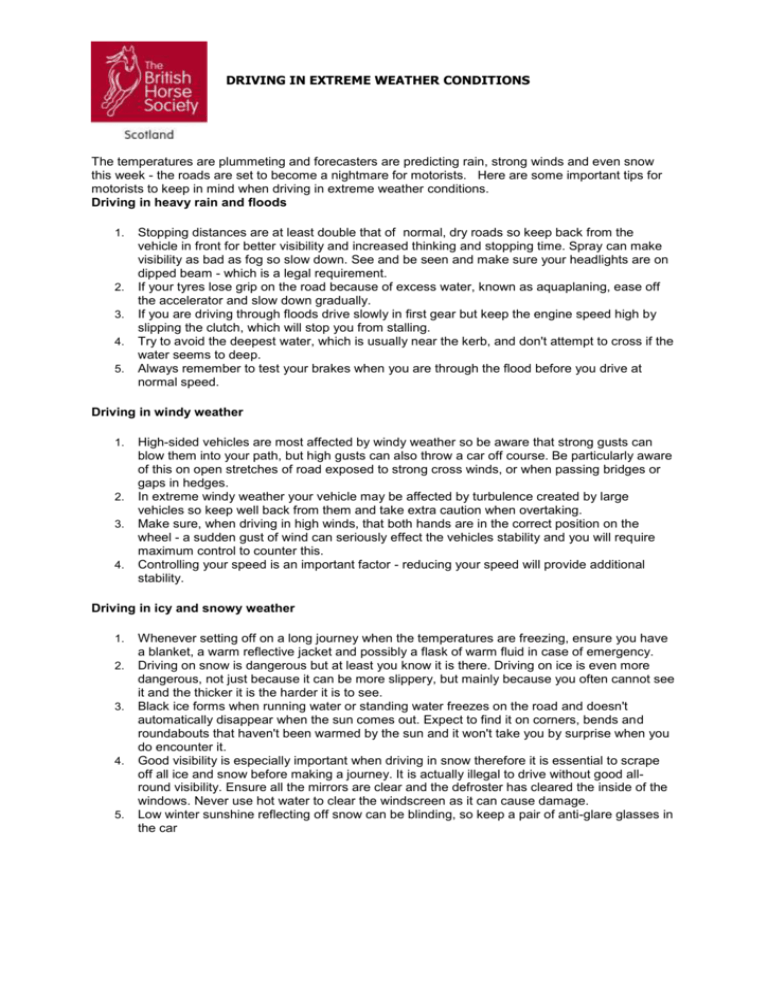
DRIVING IN EXTREME WEATHER CONDITIONS The temperatures are plummeting and forecasters are predicting rain, strong winds and even snow this week - the roads are set to become a nightmare for motorists. Here are some important tips for motorists to keep in mind when driving in extreme weather conditions. Driving in heavy rain and floods 1. 2. 3. 4. 5. Stopping distances are at least double that of normal, dry roads so keep back from the vehicle in front for better visibility and increased thinking and stopping time. Spray can make visibility as bad as fog so slow down. See and be seen and make sure your headlights are on dipped beam - which is a legal requirement. If your tyres lose grip on the road because of excess water, known as aquaplaning, ease off the accelerator and slow down gradually. If you are driving through floods drive slowly in first gear but keep the engine speed high by slipping the clutch, which will stop you from stalling. Try to avoid the deepest water, which is usually near the kerb, and don't attempt to cross if the water seems to deep. Always remember to test your brakes when you are through the flood before you drive at normal speed. Driving in windy weather 1. 2. 3. 4. High-sided vehicles are most affected by windy weather so be aware that strong gusts can blow them into your path, but high gusts can also throw a car off course. Be particularly aware of this on open stretches of road exposed to strong cross winds, or when passing bridges or gaps in hedges. In extreme windy weather your vehicle may be affected by turbulence created by large vehicles so keep well back from them and take extra caution when overtaking. Make sure, when driving in high winds, that both hands are in the correct position on the wheel - a sudden gust of wind can seriously effect the vehicles stability and you will require maximum control to counter this. Controlling your speed is an important factor - reducing your speed will provide additional stability. Driving in icy and snowy weather 1. 2. 3. 4. 5. Whenever setting off on a long journey when the temperatures are freezing, ensure you have a blanket, a warm reflective jacket and possibly a flask of warm fluid in case of emergency. Driving on snow is dangerous but at least you know it is there. Driving on ice is even more dangerous, not just because it can be more slippery, but mainly because you often cannot see it and the thicker it is the harder it is to see. Black ice forms when running water or standing water freezes on the road and doesn't automatically disappear when the sun comes out. Expect to find it on corners, bends and roundabouts that haven't been warmed by the sun and it won't take you by surprise when you do encounter it. Good visibility is especially important when driving in snow therefore it is essential to scrape off all ice and snow before making a journey. It is actually illegal to drive without good allround visibility. Ensure all the mirrors are clear and the defroster has cleared the inside of the windows. Never use hot water to clear the windscreen as it can cause damage. Low winter sunshine reflecting off snow can be blinding, so keep a pair of anti-glare glasses in the car

